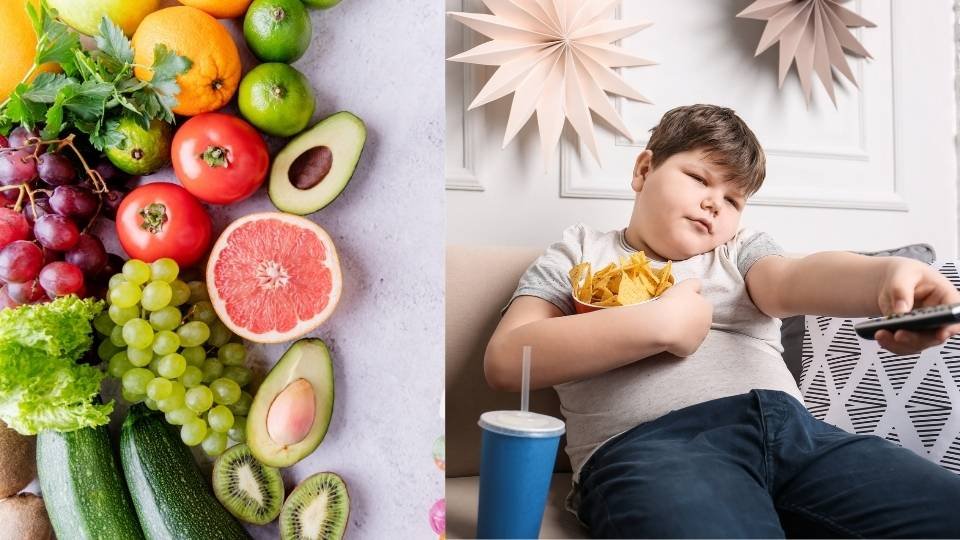Healthy Food vs Junk Food for Kids

Healthy Food vs Junk Food for Kids In today’s fast-paced world, where convenience often drives food choices, the debate between healthy food and junk food for kids is more relevant than ever. With rising childhood obesity rates and increasing concerns about nutrition, it’s crucial for parents, educators, and caregivers to understand how these food choices impact children’s health, behavior, and long-term well-being.
What Is Healthy Food for Kids?
Healthy food for children refers to nutrient-rich options that fuel their bodies and support their growth. These foods are packed with essential vitamins, minerals, fiber, protein, and healthy fats. Common examples include:
- Fresh fruits and vegetables
- Whole grains like oats, brown rice, and whole wheat
- Lean proteins such as eggs, chicken, beans, and tofu
- Dairy or plant-based alternatives high in calcium
- Nuts, seeds, and healthy oils like olive or coconut oil
Eating a balanced diet rich in these foods supports brain development, improves mood, enhances immunity, and boosts energy levels—critical for active, growing kids.
What Is Junk Food?
Junk food for kids typically refers to ultra-processed items high in sugar, unhealthy fats, salt, and empty calories. These foods offer little to no nutritional value and can be harmful if consumed regularly. Examples include:
- Sugary drinks and sodas
- Candy, chocolate, and gummy snacks
- Potato chips and salty packaged snacks
- Fast food like burgers, pizza, and fried chicken
- Frozen pastries, donuts, and sweet breakfast cereals
While these foods may taste good, they do not nourish the body and often replace healthier meal options, leading to long-term health issues.
Key Differences: Healthy Food vs Junk Food
| Feature | Healthy Food | Junk Food |
| Nutritional Value | High in nutrients, vitamins, fiber | Low in nutrients, high in sugar/fat |
| Energy Levels | Sustained energy release | Quick spikes, followed by crashes |
| Long-term Benefits | Supports growth and immunity | Increases risk of obesity and disease |
| Cost (long-term) | Cost-effective through prevention | Costly due to health complications |
Understanding the contrast helps parents make informed choices and guide their kids toward smarter eating habits.
Effects of Junk Food on Children’s Health
Excessive junk food consumption in kids can cause a variety of health issues, some of which may appear early in life:
1. Childhood Obesity
Junk food is calorie-dense and leads to overeating without providing satiety. This imbalance results in weight gain and, eventually, obesity—now a global epidemic in children.
2. Poor Academic Performance
Studies show that diets high in sugar and saturated fats negatively impact memory and learning. Kids may struggle to concentrate, complete tasks, or perform well in school.
3. Weakened Immune System
Lack of essential nutrients like zinc, vitamins A, C, and E weakens the immune response, leaving children vulnerable to frequent colds and infections.
4. Behavioral Problems
Artificial additives, food dyes, and sugar can contribute to mood swings, hyperactivity, and even symptoms resembling ADHD in some children.
5. Dental Issues
High-sugar snacks and sodas cause tooth decay, cavities, and gum disease, leading to painful and expensive dental treatments.
Benefits of Healthy Eating for Children
On the flip side, prioritizing healthy eating for kids can lead to a lifetime of benefits:
- Strong bones and teeth from calcium-rich foods
- Sharper brain function supported by omega-3s and antioxidants
- Steady mood and behavior, thanks to balanced blood sugar
- Improved physical fitness and energy for play and learning
- Better self-esteem tied to a healthy body image
When kids eat well, they thrive—physically, mentally, and emotionally.
Why Do Kids Prefer Junk Food?
There are several reasons children are drawn to junk food:
- Marketing: Bright packaging, cartoons, and ads promote sugary snacks aggressively.
- Taste: Salt, sugar, and fat create addictive flavor profiles.
- Convenience: Junk food is easy to access, especially in busy households.
- Peer Influence: Kids mimic friends’ choices, especially in school settings.
- Emotional Reward: Some parents use junk food as a treat or comfort during stress.
Understanding these triggers is the first step in changing the narrative.
How to Transition Kids from Junk Food to Healthy Eating
You don’t need to eliminate junk food overnight. Gradual changes can work wonders:
1. Involve Kids in Cooking
Let them choose recipes, help with meal prep, and learn where food comes from. This makes them more likely to try and enjoy healthy meals.
2. Make Healthy Food Fun
Use cookie cutters for fruits, build colorful veggie “rainbows,” or create snack plates with dips. Visual appeal makes a big difference.
3. Swap Smartly
Replace soda with water or natural fruit juice. Opt for homemade baked chips instead of fried ones. Use Greek yogurt with honey instead of sugary pudding.
4. Limit, Don’t Ban
Completely banning junk food can make it more desirable. Allow small portions occasionally to avoid feelings of restriction.
5. Be a Role Model
Kids copy what they see. When adults choose healthy foods, children are more likely to follow.
Role of Schools and Communities
Educational institutions and local communities play a crucial role in supporting healthy lifestyles:
- Nutritious school lunches should be the norm, not the exception.
- Nutrition education programs can teach kids about food labels, balanced meals, and smart choices.
- Banning sugary snacks from vending machines and replacing them with fruit, nuts, or healthy bars is a great start.
- School gardens and cooking clubs can make healthy eating exciting and educational.
Long-Term Impact of Early Food Habits
Instilling good eating habits in childhood lays the foundation for a healthy adulthood. Kids who grow up eating well are:
- Less likely to develop diabetes, heart disease, or high blood pressure
- More likely to maintain a healthy weight
- Better prepared to make smart food decisions independently
- More aware of how food impacts mood, energy, and performance
Final Thoughts: Finding the Right Balance
The discussion of healthy food vs junk food for kids isn’t about cutting out treats forever. It’s about balance, moderation, and mindfulness. A slice of pizza at a birthday party is perfectly okay—but it shouldn’t replace dinner every night.
As adults, our job is to guide, educate, and support children in building a positive relationship with food. With small steps and consistent effort, we can create a healthier generation—one bite at a time.


